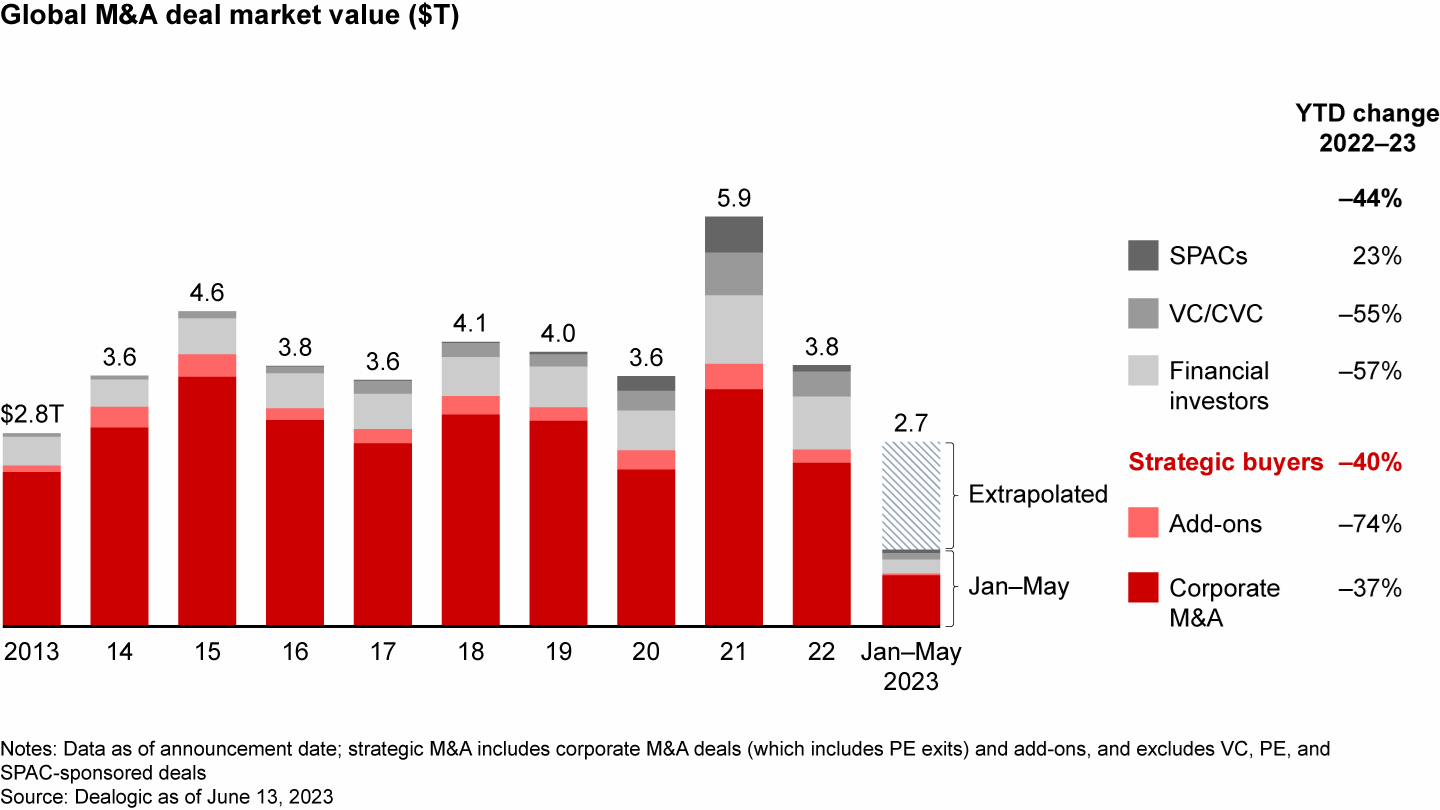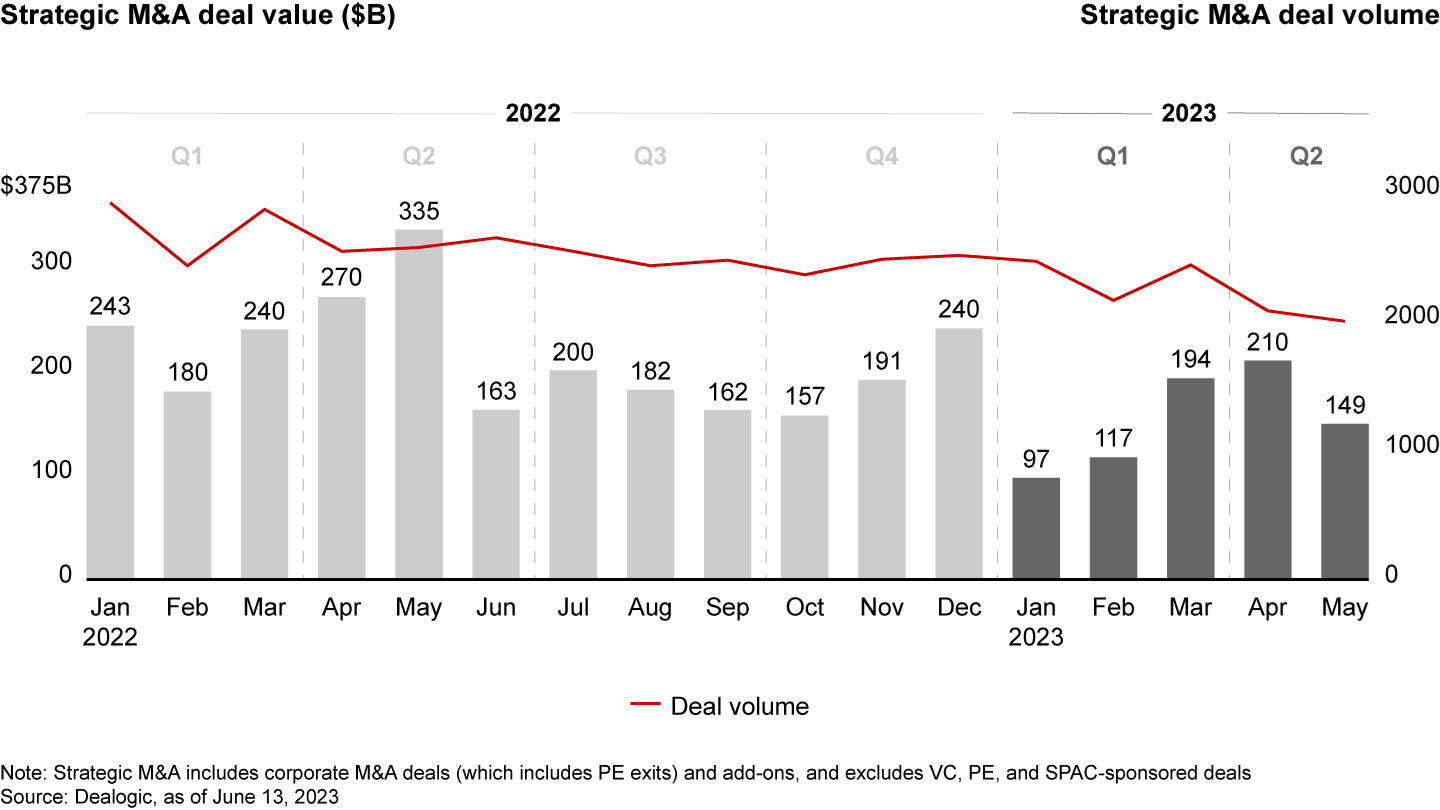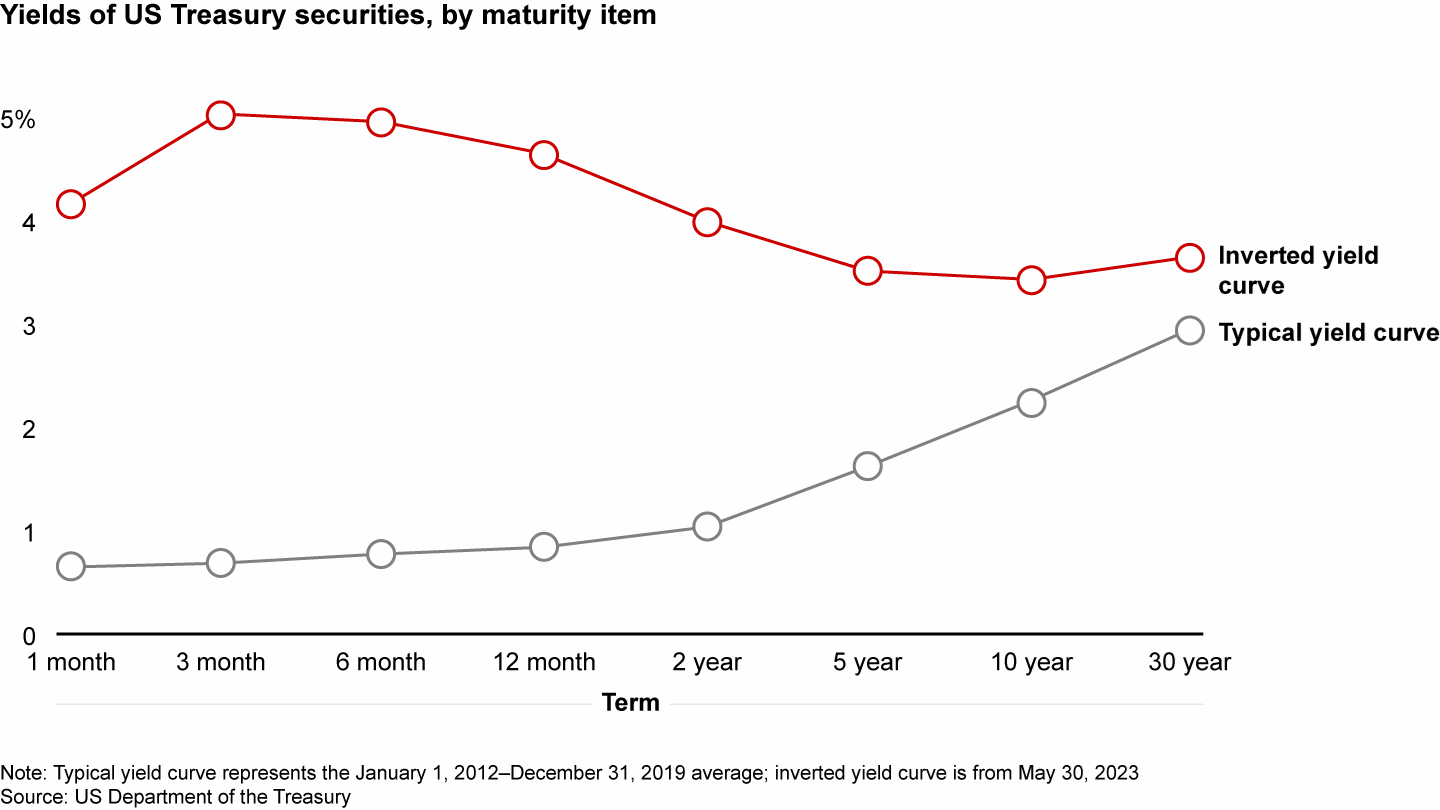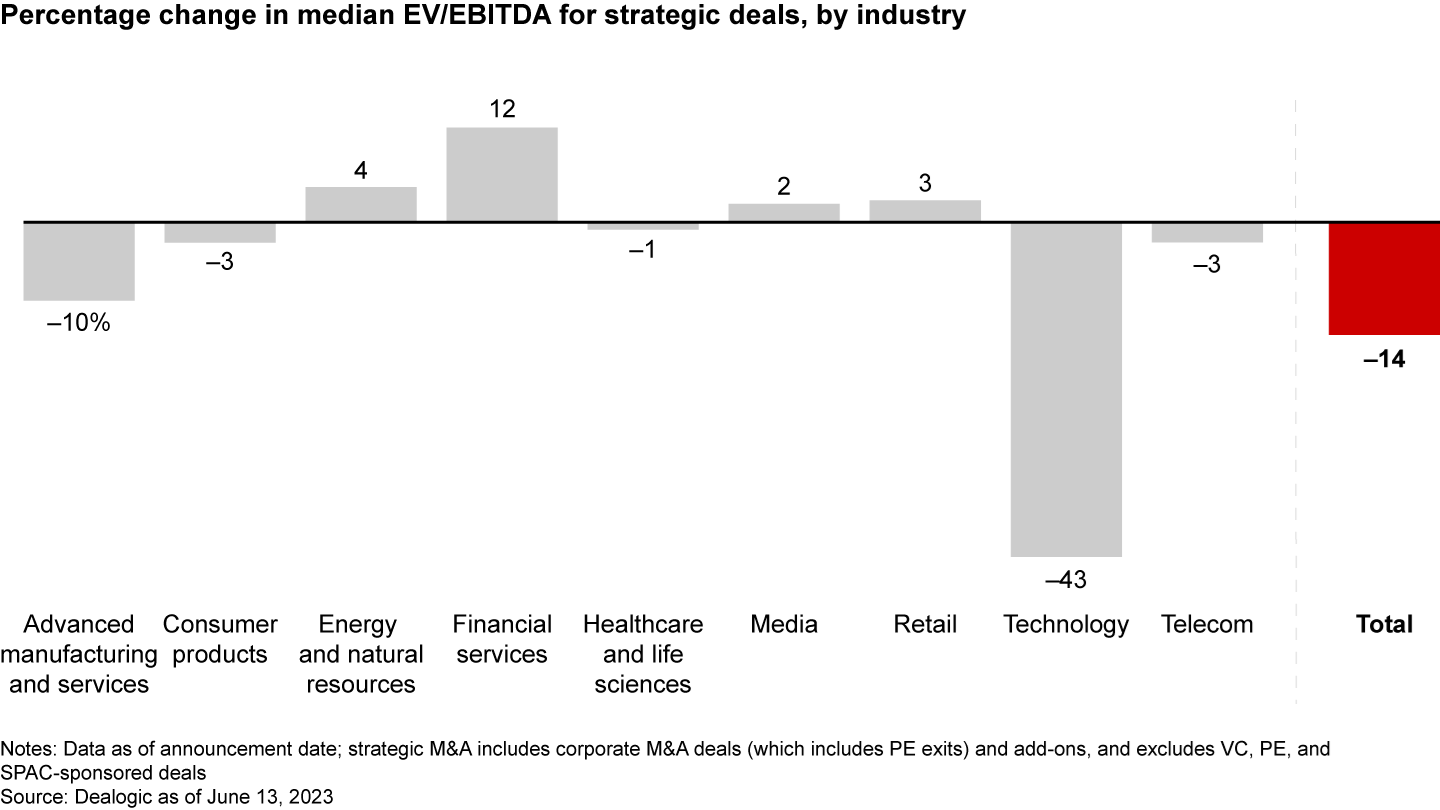Brief

Executive Summary
- Overall global M&A value is down 44% in the first five months of 2023.
- Macroeconomic and interest rate uncertainty continues to complicate dealmaking and foster caution among sellers and buyers alike.
- Valuations for strategic technology deals declined dramatically, but valuations have held steady or ticked up in most other sectors.
- Dealmaking is likely to resume faster than many have anticipated and favor the best-prepared buyers and sellers.
We’re now 12 months into a lethargic mergers-and-acquisitions market, with deal values and volume well off postpandemic highs. Consider the mixed signals dealmakers face. Deal valuations have fallen dramatically, but hover above a typical downturn trough. Central banks continue to raise interest rates, yet an inverted bond market suggests a coming reversal. Layoffs have accelerated, but the hiring market remains resilient. Inflation has slowed, but persists. The much-anticipated recession hasn’t officially arrived, yet executives are deploying downturn playbooks with a renewed focus on cost discipline.
It’s an economic climate that’s weird by any standard, so we conducted a series of extensive interviews with our clients to understand how it has changed their M&A mindset. We repeatedly heard five messages.
- Buyers still want to get deals done. They acknowledge that times of turbulence create great opportunities to improve strategic position. And yet, almost every dealmaker has told us that they struggle to get deals over the finish line.
- Sellers believe in their businesses. Many uttered variants of the sentiment that nobody wants to be the chump that sold at the market bottom. Private equity exits have dried up, and corporate divestitures have slowed down.
- Conditions vary widely by industry. Scale deals, particularly in highly regulated industries like telecom, are a thing again. Yet in other industries (we’re looking at you, consumer products), deal teams can’t even agree on the base performance of the last three years.
- Around the world, government efforts to tamp down M&A through regulation and competitive reviews are working. While the Federal Trade Commission in the US may be losing in the courtroom, there’s a distinct chill in the boardrooms where deal ideas are discussed.
- No one thinks the era of M&A has come to an end. This is just a pause. Teams are doing the much-needed work in M&A strategy, sector screening, and due diligence to prepare to act quickly when the market opens up again.
Buyers and sellers haven’t yet aligned
A few charts tell the story of M&A in the first half of 2023.
Overall global M&A value is down 44% in the first five months of 2023 (see Figure 1). The year-on-year comparison is particularly stark due to the heady start of 2022. Leveraged deal value has fallen the most, by 54% including private equity, PE add-ons, and venture capital. These acquirers face a narrower path to value creation amid higher-cost leverage and more limited access to financing.
Within the strategic market, PE-backed add-ons fell twice as fast as corporate M&A, in part because corporate acquirers retain access to lower-cost capital.
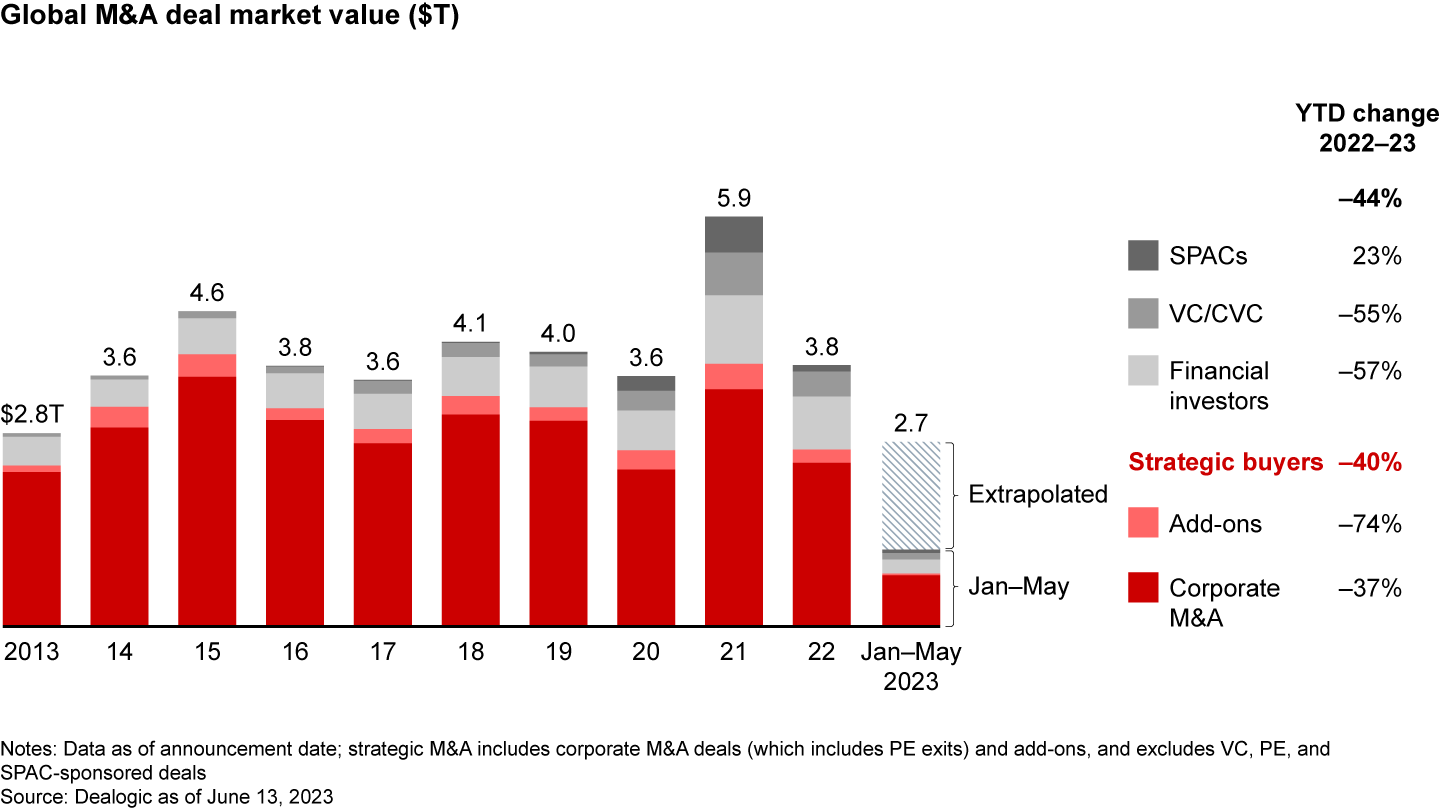
More than a year after the US Federal Reserve Bank’s most aggressive rate hike since 1994, strategic M&A remains stalled (see Figure 2). Deal value in the first quarter of 2023 represented the lowest first quarter in 20 years. Volumes are also lower, but slightly more resilient (down 16% year-over-year through May), revealing a market shift to smaller deals.
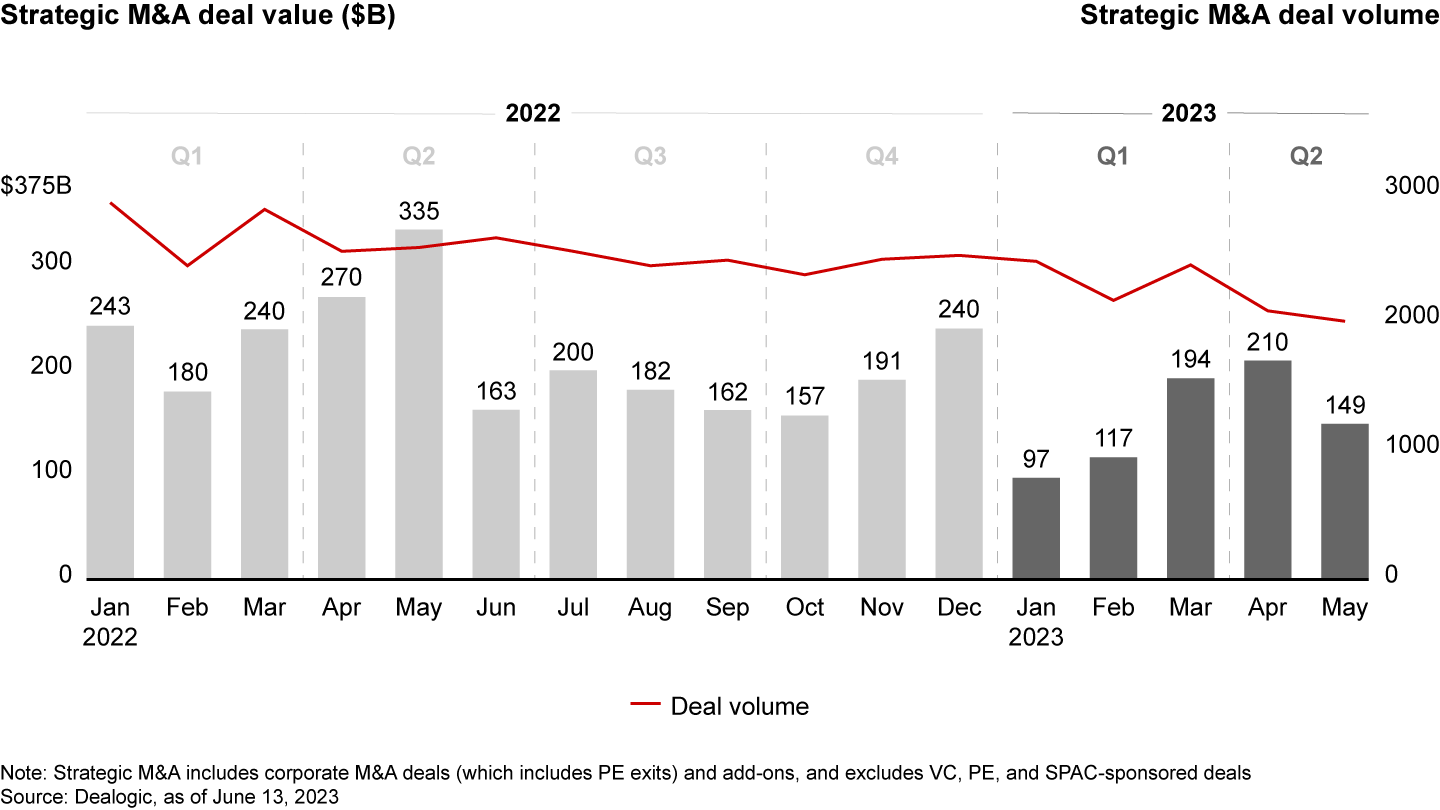
The first half of 2023 has been characterized by an inverted yield curve, where shorter-term debt instruments have higher yields than longer-term ones (see Figure 3). This unsustainable quirk in bond market pricing means markets aren’t yet sure when and where interest rates will stabilize. Such uncertainty continues to complicate dealmaking and foster caution among sellers and buyers alike.
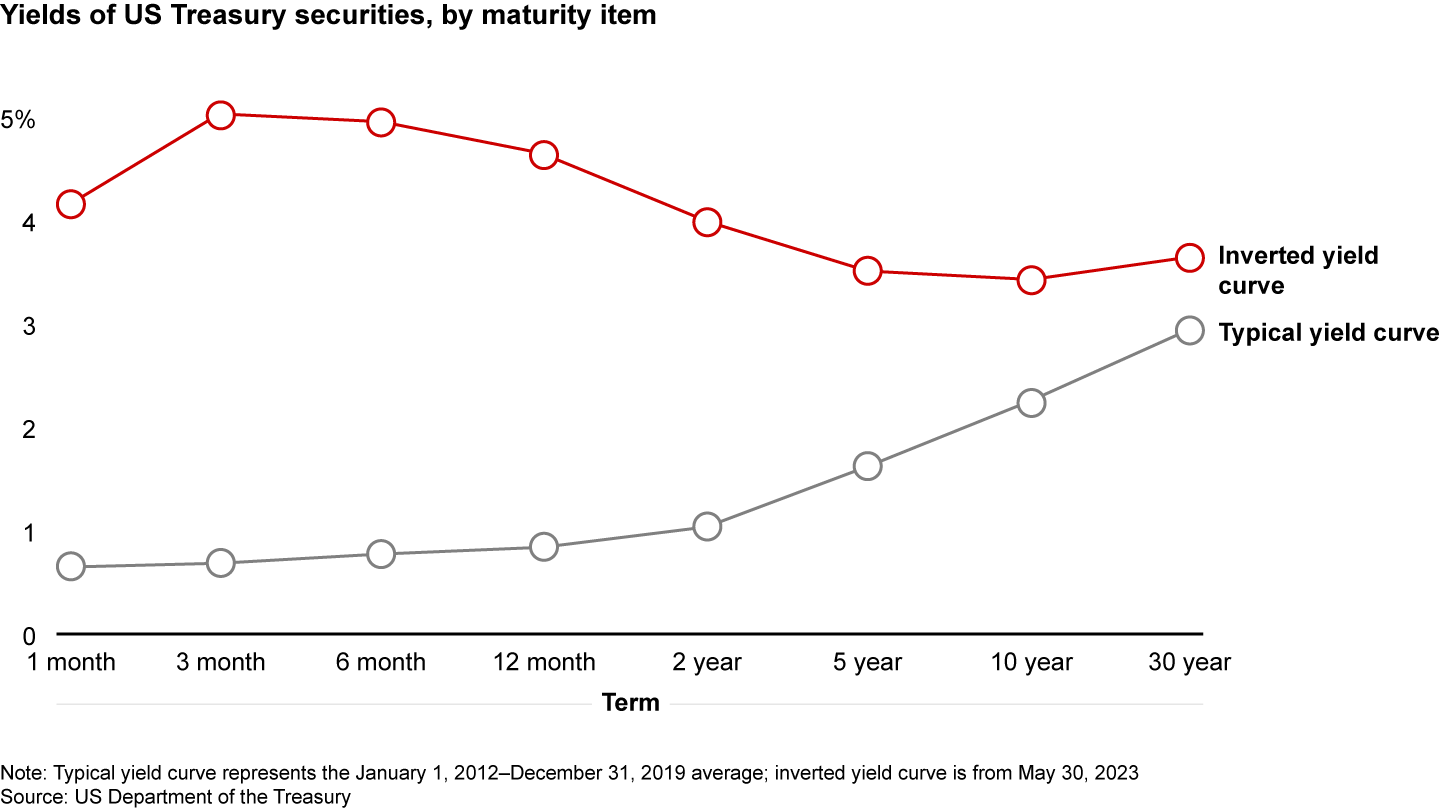
Deal multiples have reacted unevenly. While valuations have dropped dramatically in technology, in most other sectors, valuations have held steady or ticked up (see Figure 4).
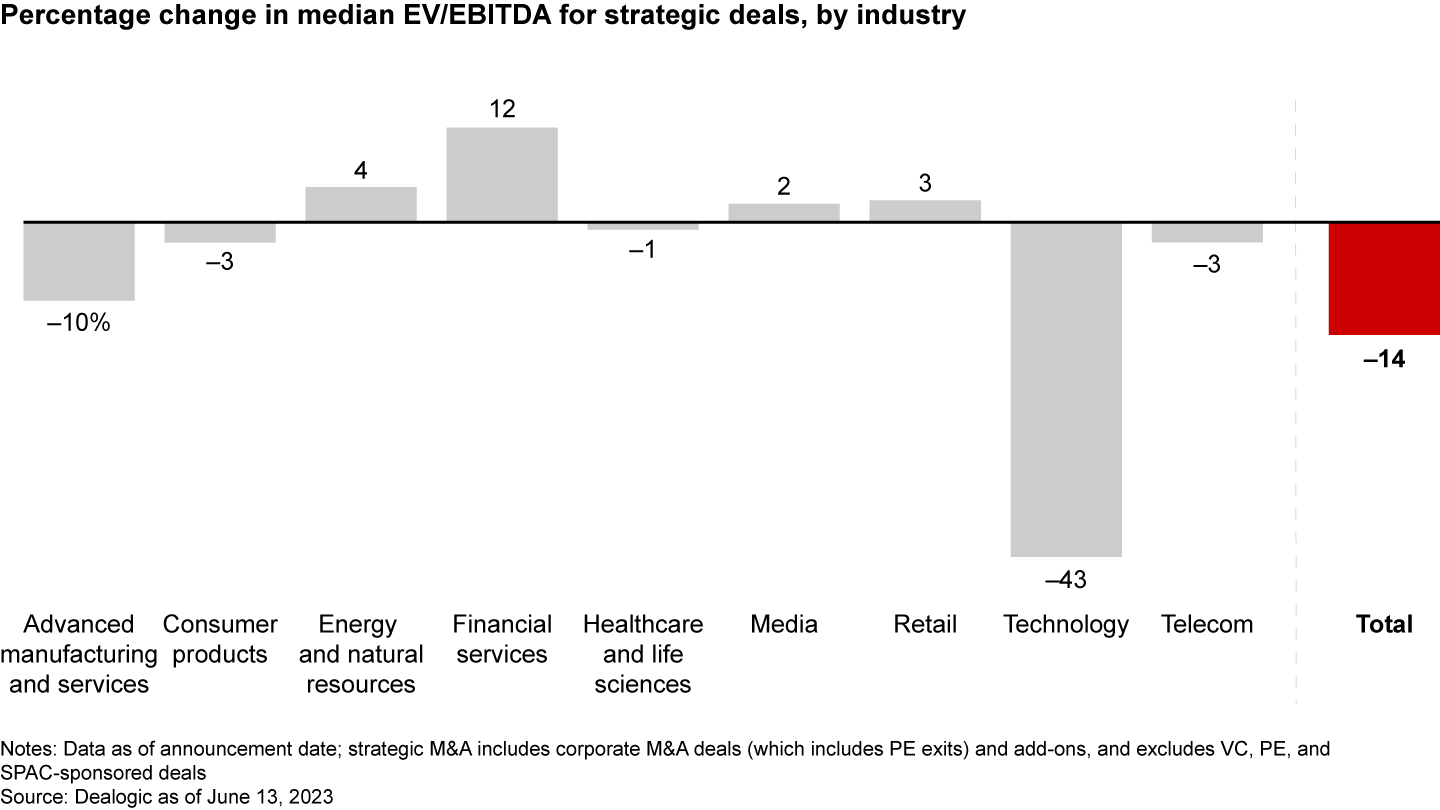
What should dealmakers be doing now?
In a nutshell, do your homework, and be ready to act.
We expect that the recovery will not be everywhere, all at once. Instead, certain industries will have the chance to carpe diem. We’re already seeing that commodity-based industries, pharmaceuticals, and banking are initiating a wave of scale-oriented deals to seize new opportunities, as well as fight off existential threats. A word of warning here. Past cycles haven’t been kind to some of these deals. In fact, some of the worst deals in history were done under these conditions. Think about Bank of America’s failure to pressure test the underlying health of Countrywide Financial in 2008.
In other industries, it may take some time for the valuation dance to play out. In some, the twin aftershocks of the pandemic and the inflation spike have made it difficult to ascertain what the base business performance actually is. However, this issue will be resolved and those that are best prepared will be favored as the market heats up again.
Another segment of the market will return along with interest rate certainty. As we’ve mentioned, industries with cash flows tied up in “terminal value” have been particularly hard hit by the past year’s interest rate rise. As volatility ebbs, pricing certainty will return. Of course, if the inverted yield curve is to be believed, a long-term tailwind will support growth-oriented investing.
Don’t forget about capability investing. We note that smaller deals, particularly in the corporate realm, have been far more resilient than big-dollar M&A. Under-the-radar deals for new intellectual property, new capabilities, and new markets are still happening—and likely to accelerate. This year, a new catalyst for capability dealmaking is likely to be generative artificial intelligence (AI), given its profound implications for business operations.
Finally, we do expect to see more assets coming to market. PE exits are bound to pick up as portfolios age. That process can be delayed, but cannot be postponed forever. Likewise, M&A teams are working to prepare businesses that should be divested from corporate portfolios. In almost all cases, the strategic imperatives that suggest a change in parenting advantage haven’t abated during this pause.

Better Together: OpenAI and Bain Form an Alliance
Harness the power of generative AI to transform your business
For dealmakers, all of the above begs a critical question: Is your team ready to act? Like all market bottoms, we won’t know we hit it until we’re well past it, so now is not the time to relent on deal discipline in diligence and valuation. In the meantime, be prepared for valuations to regain steam as market activity quickens.
When the fog lifts on interest rates and macroeconomics, we’ll see buyers eager to do deals and a backlog of assets for sale. When that happens, dealmaking is likely to resume faster than many have anticipated and favor the buyers and sellers that are best prepared, focused, and ready to act.
